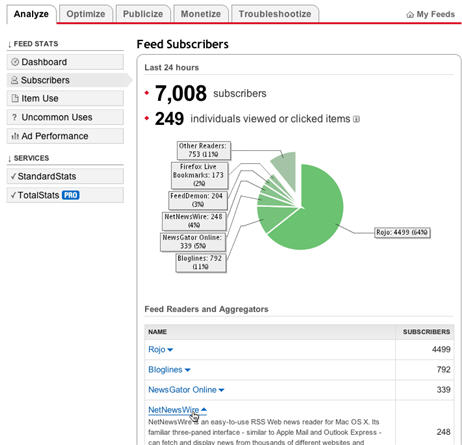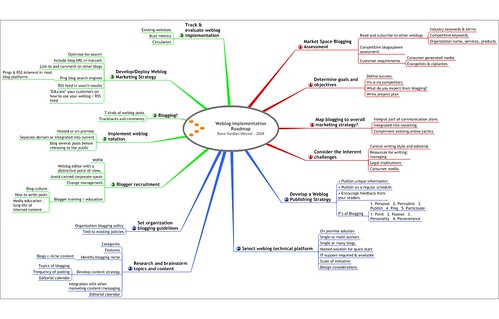Back in December of 2007, I decided that I wanted to try something new and fresh with my website. I was also getting tired of the standard websites with their uniform look and I didn’t really feel like I was getting any benefit from it. So, I did a bit of research and decided that I wanted to try a blogging platform and after a bit more research, I chose WordPress.
Before I fully converted to the blog, I was receiving approximately 900 unique visitors each month.
- By January, one month after I converted, I was receiving 1300 unique visitors.
- By February it had grown to 2500 unique visitors
- In March, it had grown to 4000 unique visitors in the month.
That is four times the traffic I started with!
So, let’s look at the top five reasons why you need a blog (in my biased opinion, WordPress is the way to go so I will reference WP throughout this post but you could use any blogging platform to achieve these same benefits…):
1. Blogs are User-Friendly and Very Easy to Use
The upside to having blog software as opposed to a website is that it is very user-friendly. The blog uses a GUI, or a graphic-user interface, which means that that everything that you may need to do is laid out in simple to understand graphics. The blogging software also conforms to the standards of most other software programs. For example, the graphic icons you see in Microsoft Office programs are very similar to the graphics you’ll see inside of your blog.
The reason that this is so important is that YOU can update your OWN website and you don’t need to pay high prices in web design fees to do so! There is no messing around with HTML code, you can avoid having a dull, lifeless site that people only visit occasionally and instead, you can update it yourself and give people a reason to return again and again and again.
The other upside to this is that when you want something changed quickly, you can do so. You no longer have to wait on a web designer or a virtual assistant, you can just pop in to the dashboard and update the page you need to make changes to and click save and boom – you’re done!
Making regular posts is also easy to do. In a few, short clicks and then some keystrokes for the body of your post, you can have fresh, new content on your blog immediately. If you’re feeling particularly creative one day, you can write a series of posts and save them all to post on future dates. For me, I will write eight or nine blog entries at a time and save them to post one or two days apart. This is also useful if you are going on vacation. In February, my husband and I went to the Dominican for a vacation and before I left, I wrote blog entries to cover the week I was gone and just posted them in advance. On the days that I specified, my blog entries showed up on the blog!
2. Blogs Are Easy to Navigate
All blogs follow a fairly standard style of formatting and navigation. Although each template may look different, they all contain the same standard elements. When I visit a blog, I always know where to go to see Recent Posts. I also know that on the majority of blogs, I will be able to find a place to subscribe to the blogs feed. A feed is simply a syndication of your blog entries. That syndicated text is then sent out to your blog visitors feed readers and is sent out to the search engines, etc. This is part of the reason that blogging is so powerful in getting people to your site.
Have you ever visited a website where every menu has been different and each sidebar contained different text depending on where you were on the website? Those types of websites are confusing and they don’t lead the website visitor where they should be going. With blogging software, it remains standard and is always updating itself. When you make a change on one sidebar, it automatically updates on every other sidebar which eliminates any sort of confusion for your website visitors.
A great book I want to recommend is Steve Krug’s “Don’t Make Me Think.� Even if you don’t design websites, you want to read this book. A lot of the reasons that I love blogs are outlined in his usability section. He references making websites more functional by following his principles but what is so great is that a blog already conforms to many of his standards.
3. People Can Subscribe to Your Blog and Stay Current
Now, I want to explain what RSS is first. RSS stands for Really Simple Syndication. What it is is a family of web feed formats used to publish frequently updated digital content, such as blogs, news feeds or podcasts. People who are into blogging will use your RSS feed to do a few things:
- They may subscribe to receive a daily digest of new content. Think of how powerful this is in terms of keeping you in touch with your target market. If someone receives constant, updated messages from you, you are always in their line of sight and they will see what you are up to, new products or services you are launching and how much knowledge you have on your chosen subject.
- They may also add you to their feed reader. I have a program that I use called Feed Demon and this software program tracks all of the blogs I am interested in by capturing and updating the feed that comes from the blog. Each day I can open up this software program and have an instant summary of every blog I have subscribed to and I can review what it is people are talking about. This allows me to stay current without having a thousand bookmarks in my internet browser or trying to remember which blogs I liked to read. The same is true for your visitors. They want a quick, easy way to be reminded that you exist and that you are posting things that they want to know about.
Normal sites don’t do this for you unless you are putting out a monthly ezine that contains all of your business updates. By having the blog, you can nearly cut out the monthly ezine and just let the blog do the work for you!
4. Search Engines Love Them and They Are Content Managers
In fact, it’s so easy to build content on your blog that I have actually created info-products based on content I had blogged about over the past year. Info-products become simple to do because you aren’t creating fresh, new content each and every time. What you blog about could become an article which could turn into an e-book. Blogging gets you into the habit of writing and creating which then allows you to easily and effortlessly create info-products.
Your visitors will also love this because when they show up on your site looking for assistance in your chosen profession, they can find a whole archive of great content. Most of my blogging clients will archive their past newsletters or e-zines on their blogs so that their clients can read past issues without having to download PDFs or visit thirteen or fourteen different web pages.
Search engines love blogs for a number of reasons. Number one, they love the fact that fresh, new content is being posted all of the time. Even if you are only updating it once a week, you will still see the benefits from it. Each and every time you post something to your blog, the search engines are automatically pinged and if you have pinging software installed, which is free and simple to use, it’ll automatically ping the different services that should be pinged.
Number two, search engines love hyperlinks and trackbacks. Hyperlinks are links to other people’s websites, blog entries, audio files, etc. and track backs are special links from someone else’s blog entry that let the other person know you’ve blogged about him or her. It also posts YOUR entry on their site for other people to read. This is how blogging also becomes so viral.
5. They Become an Active Networking Source for Your Business
For me, I have met a number of brand new people through my blog. Some of these people became clients, others were just frequent readers that became friends and others asked me to collaborate with them on special projects. By having a blog, you can become a place where people visit to learn about what it is you are writing about but also so that they can meet you, get to know you and someday work with you. You can build a community and allow other people to meet through you which then allows people to talk about you and get your name out there.
If you think of standard networking, you think of people showing up to an event for about an hour, rushing through the crowds trying to get business cards and then leaving the event and never really having a true feeling of connection. I’m sure we’ve all experienced this. Blogging gives your interested parties a place to come to learn about you. They can start to see how you both would benefit from knowing each other and they will be more apt to approach you over time. This is a much more effective way to network and you don’t need to worry about your business card being thrown in the trash.
Another way that it becomes a networking tool is when you reach out to other people’s blogs. Once you start blogging, you will quickly realize that the whole world is blogging and there are many great things to be read. By visiting other people’s blogs and leaving comments on their posts, you will do two things: one, you will introduce yourself in a non-threatening or non-imposing way to someone you may not have wanted to just e-mail in the past and two, by showing that you have interest in that subject on their blog, you’ll gain interested visitors who share similar interests.
Erin Blaskie is the owner of Business Services ETC, The VA Coach and VA Matchmaker. She services internet marketers, coaches, speakers and solopreneurs with their everyday operational needs which frees up their time to focus on the big picture. She can be found at www.erinblaskie.com.








